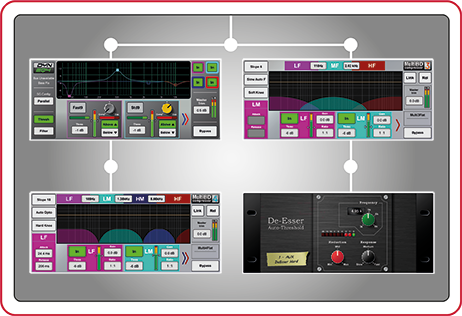
For example, you can set up the encoders as effects sends, grab a channel and then just wind up your reverb without having to leave your master bank. You can pretty much run the entire console from soft keys.One of the big differences between the SQ-5 and the SQ-6 is that the SQ-6 has four assignable encoders with their own assignable buttons on the left-hand side of the screen.

Once you get used to having a certain number of assignable buttons and encoders, you can never have enough. Happily, they’re also great for that, and very transparent.

You can get quite aggressive with the channel compressors, but I tend to use compression subtly. Operating the SQs is very ‘analogue-y’ in the sense that you’ve got all of the essential channel controls in front of you and along the side of the screen, as opposed to ‘touch and scroll’ operation. While they don’t have dedicated encoders for all controls of each band, it’s still very quick to access, and having a separate encoder for the high pass is really handy. This version works with SQ consoles running firmware V1.5.Having the touchscreen to work with in addition to the EQ encoders on the surface makes the SQ workflow very fast. Three devices running SQ-MixPad can be connected and used at the same time as using the SQ surface, giving four separate points for control of all mixes.Īn ‘Offline’ mode allows for SQ show files to be edited and managed without connection to a console.
It can be used simultaneously and independently of the SQ surface, so it can provide supplementary local control as well as giving the engineer the freedom to move around and mix from different listening positions. SQ-MixPad allows control of an SQ console over a wired or wireless network.


 0 kommentar(er)
0 kommentar(er)
